2010 Golden Globes: Fifteen Year-Olds Win Out
If I were still fifteen, I no doubt would be walking around with my head held high today. My two favorite movies would have walked off with Best Motion Picture Golden Globes last night. Not only would I proclaim the inevitably of Avatar’s snag of Best Motion Picture - Drama, but I would rejoice in the courage and forward-thinking of the Hollywood Foreign Press Association (HFPA) for recognizing the genius that is The Hangover, which won for Best Motion Picture - Comedy or Musical.
But I’m not not fifteen anymore. Nor am I jaded, befuddled or disappointed. Snark and derision have no place here; let us appraise what these two big wins at the Golden Globes mean.
If you’ve been keeping up with the candler blog, you know [Sunrise found ](http://www.candlerblog.com/2009/12/20/avatar-the-problematic-outer-body- solution-to-cultural-tensions/)[Avatar](http://www.candlerblog.com/2009/12/20 /avatar-the-problematic-outer-body-solution-to-cultural-tensions/)[ a bit racist, but nonetheless revolutionary from a technological/technical standpoint](http://www.candlerblog.com/2009/12/20/avatar-the-problematic- outer-body-solution-to-cultural-tensions/). And if you’ve been reading us since the summer, you know [that ](http://www.candlerblog.com/2009/06/07 /review-the-hangover/)[The Hangover](http://www.candlerblog.com/2009/06/07 /review-the-hangover/) was completely lost on me, which made me feel like a pariah in cinephilic circles. For my money, The Hurt Locker should have taken the Drama statue (and Kathryn Bigelow for director) while the Comedy award should have gone to Julie & Julia, which was one of the more intriguing films last year. So what happened?
The Golden Globes are doled out by members of the press, and Avatar and The Hangover provided some wonderful fodder for off-screen squawking this year. In other words, they were the bread and butter of journalists of all walks. Take Todd Phillips, for example. Legend has it he risked his career by not casting a single “name” in his film while assuming much of the financial burden as a producer of the film. Literally, if the film tanked, we wouldn’t see much of him in Hollywood for at least a decade. And then there’s James Cameron’s 3D epic, for which the director invented a camera that brought the film’s budget to half a billion dollars. If that weren’t enough, he promoted the opening of 3D equipped auditoriums across the nation, leading the next evolution of trickery that will get butts in seats at the cineplex. So yeah, both of these films have enduring offscreen narratives. But does that make them worthy of our accolades.
Sure it does! The real surprise here is The Hangover, which purposefully doesn’t have a respectable bone in its body. It is a gross-out buddy comedy that digs deep into the darkest corners of our collective psyche. I didn’t like it, but I can appreciate that the HFPA was so wowed by a comedy that they offer up its highest honor. Mr. Field has somehow reached the heights that Bobby and Peter Farrelly have only dreamed of: to be respected as a filmmaker first and a comedy filmmaker second. It’s going to be hard to follow up this film. After all, Mr. Field is probably going to make a lot more shlocky comedies that won’t gain the respect of anyone, but at least he has a Globe in his treasure chest to push him forward.
Avatar is the obvious favorite for every award under the sun, which is a bummer because it makes me wonder if the people voting on this actually watched the whole movie. It’s a fine film no doubt, but its greatest achievements have nothing to do what what actually happens between the film’s opening and closing credits. 3D is here to stay, again, and this time around it is all due to the hype behind Mr. Cameron’s film. The release had been pushed back so many times in an effort to equip more theaters with the technology, which in essence has helped the tech flourish. Also, he matured the motion capture aspect of the film so well that it isn’t even part of the discussion anymore as it is, say, when Robert Zemeckis goes out to make a film.
It is an unquestionable fact: there are movies before Avatar and there are movies after. Again, technologically, the film moves us forward. Unfortunately, the story doesn’t quite live up to the method by which it is conveyed. But isn’t it enough that we have been moved? Isn’t it enough that the tech is here because of this film. If you ask me: no. But I can fully respect the HFPA for honoring such an achievement.
So there you have it. The awards make sense, even when the films don’t. Now, onto the Oscars and all the trash-talk that comes with them.
6 Most Popular Posts of 2009
Well that’s all folks, the year’s over and it’s time to move on. Here’s a list of the top 6 candler blog posts you all gravitated towards in 2009. Why 6? Well why not kids? Read ’em again or ignore them once more. In any event, the book is closed and we’ll certainly work to out-do ourselves in 2010. See you there.
[Watching Inglourious Basterds in a Room Full of Jews](http://www.candlerblog.com/2009/12/17/watching-inglourious-basterds-in-a -room-full-of-jews/)

[Google Wave for Filmmakers: A Concept](http://www.candlerblog.com/2009/06/05 /google-wave-for-filmmakers-a-concept/)
[](http://www.candlerblog.com/2009/06/05/google-wave-for- filmmakers-a-concept/)
[Starting Out in Film, Now What?](http://www.candlerblog.com/2009/05/22 /starting-out-in-film-now-what/)
[](http://www.candlerblog.com/2009/05/22/starting- out-in-film-now-what/)
[Once Upon a Time in Violence Occupied Cinema…: An Analysis of Inglourious Basterds](http://www.candlerblog.com/2009/08/21/once-upon-a-time-in-violence- occupied-cinema-an-analysis-of-inglourious-basterds/)
[](http://www.candlerblog.com/2009/08/21/once- upon-a-time-in-violence-occupied-cinema-an-analysis-of-inglourious-basterds/)
[Remembering Mr. Movie, Steve Friedman, 1947-2009](http://www.candlerblog.com/2009/09/25/remembering-mr-movie-steve- friedman-1947-2009/)
[](http://www.candlerblog.com/2009/09/25/remembering-mr-movie- steve-friedman-1947-2009/)
[Racism in Avatar: The Outer-Body Solution to Cultural Tensions](http://www.candlerblog.com/2009/12/20/avatar-the-problematic-outer- body-solution-to-cultural-tensions/)
[](http://www.candlerblog.com/2009/12/20/avatar-the-problematic- outer-body-solution-to-cultural-tensions/)
Director of the Decade: Steven Soderbergh
After a great deal of discussion on our bests of the decade podcast, we are finally ready to let you in on our director of the decade: Steven Soderbergh. He won an Oscar, made a slew of successful films while keeping his arthouse street cred, legitimized the RED Camera, and pretty much just blew everyone out of the water in the last ten years. But don’t take my word for it, Sunrise provided a great writeup of the man and his decade. Let us know in the comments if you think we chose wisely (or not).
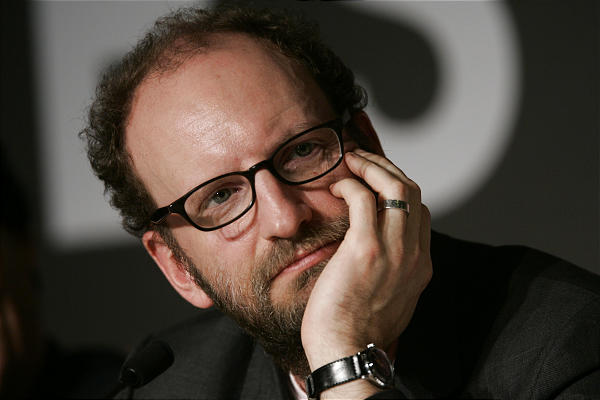
Steven Soderbergh
The way in which Steven Soderbergh starts off this decade is with such veracity and force with Traffic and Erin Brochovich, it is a wonder that he not only maintains such consistency towards the end, but implements a fascinating success that is important not only for him as an artist, but for us as an audience.
Leaving the nineties as a “Sundance” poster boy with questionable box office draw, he made a sudden turn with 1998’s Out of Sight and opened the decade with winning one of two Best Director nominations, to which only Michael Curtiz’s 1938 double nomination loss comes close in comparison. While Curtiz was just as much of a workhorse, what makes Soderbergh’s nomination so amazing is the metaphoric weight of self-challenge it represents. This challenge, as it were, is extended beyond his own growth as an artist into the ever-growing challenges he places upon his peers and audience.
With the thunderous advance in technology, the accessibility of media has allowed for more consumption without the challenge directed toward its make and read. While cinematic history notes figures such as Jan-Luc Godard or Martin Scorsese pushing past previous cinematic limitations, not just through language and syntax, but from it’s preparation right through to reception, Soderbergh has been able to successfully propel American cinema into the digital/non-linear realm with the same vigor, enthusiasm and progressive attitude toward the possibilities. And while the Best Director Oscar is awarded one evening, his going right back to work on Ocean’s Eleven the following day suggests an allegiance to advancement rather than revelry in the successes of the day.
Securing his Ocean’s Eleven strategy successfully enacted theories of cinema’s past: simultaneous stature as a studio director and the experimental freedom suggested by previous studio/indie predecessor models Scorsese and Coppola. This balance of work has opened up the opportunity not to only deliver a meaningful punch through his experimental works (such as Full Frontal or Bubble) but such depth trickles back into his studio works and blurs the line between a “wide audience” film and “art-house” fare, so that The Good German or Ocean’s Thirteen is both and neither. What is so amazing about the ability of his films to stand out beyond these “terms” is that he has allowed modern American box-office cinema to finally stand on it’s legs as “art,” whether it’s opening to a substantial amount of money on opening day or not. What’s more, is that he expects you to interact and participate with any of his films in the same way, so that a political message is intrinsic to Che just as much as it is to the The Informant!.
Besides the audience participation challenge, implicit within the work is a drive to push narrative work into a dialog with other dominant American filmmakers. My favorite film of the decade, Ocean’s Twelve, implies a conversation with Tarantino, Shyamalan and amazingly Garry Marshall, in a manner less like homage and more like respectful challenge to “do one better.” This suggests a cinematic challenge among the masters that results in rapid artistic progression, bringing the real collaborative feel of his beloved sixties cinema! Such command he has to work with the quiet humble that allows any of his films to work without any such notice of these workings. That was the craftsman Curtiz would appreciate, while the artistic and progressive flourishes are what Scorsese can pat him on the back for.
These feats have allowed Soderbergh to confirm the man seen in his sex, lies and videotape Sundance win of 1989, a means of continual development that secures him as the new American cinema master in the likes of all the greats that persevere to push an art form ahead. Please check the updates for his current Aussie stage play Tot-Mom, or the future 3D “Cleopatra” musical- opus, that I’m sure will continue to evolve the media landscape in the manner appropriate for the “digital/non-linear” age.
New Design: The What & The Why
If this is your first time here, welcome. For repeat offenders, you’ll notice that the site has gotten a complete overhaul. This has been a long time coming and it has not been easy deciding a new look and feel for the candler blog. So while you’re here, take a look around and tell us what you think of our new digs. There are certainly going to be a few kinks to be ironed out now that we’ve gone live with this. We’ll get to everything, but don’t be shy, let us know when you find something that looks out of place. If you want to know the thinking behind this overhaul, and get a little history about the site too, click through for the full story.
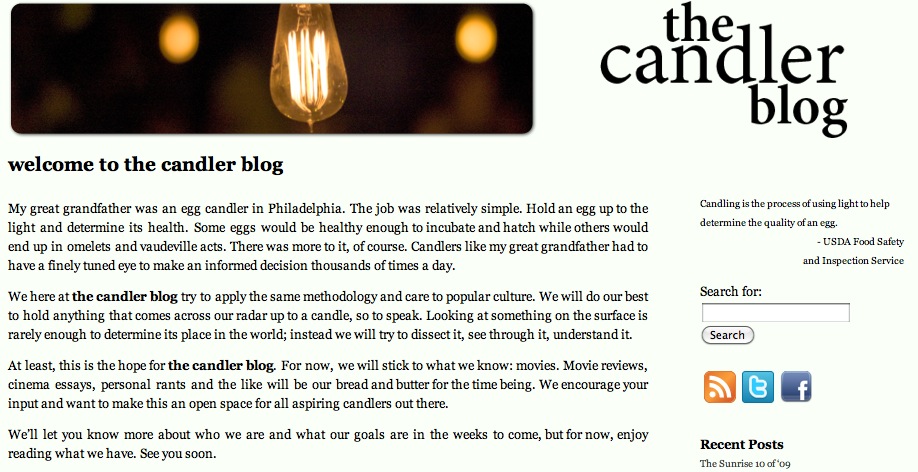
First off, I’d like to tell you about the original site design. Based on Alex Smith’s Infimum theme, we built the site to have a lot of open space and focus everything on the writing. We wanted the reader to be engaged right off the bat with the words of each post. The photograph in the header is one that I took at a bar a few years ago. It is meant to coincide with the concept of an egg candler, which is where the site gets its name. Truth be told we had a lot of space in the header and I didn’t want to put an ad there, so I pulled a number of photos out of my collection and tried them all. The header was supposed to rotate through different photos, but the light bulb just stuck.
 _place_holder;
While the original site worked very nicely for a long while, it was limited in a number of respects. For one, the text came in too low on the page, meaning the header acted as a complete waste of space. Another problem was the single sidebar, which made site navigation very confusing. You would either have to scroll around to find something you wanted or just not get there at all. There were other bits of code that were a bit too much to bear for novices like us, but I don’t want to bore you with that.
Enter Mignolo’s Oulipo theme, one of the most enchanting wordpress themes I have ever come across. We have tweaked the original, but the idea is essentially the same: text is king but not at the expense of beauty. Navigation has now been made much simpler with pages on the left and widgets on the right. The base theme is extremely dynamic and it always let’s you know where you are and how you got there. The more you click around the more you’ll understand this concept.
We’re not designers here, we’re film critics, so that’s about as well as I can describe the redesign. the candler blog started in March of 2009 and has enjoyed a growing readership ever since. We hope you come back often to check up on what’s new, and we hope that this new design helps you find some of the great content we’ve generated since we started. Here’s to another year of blogging.
The Sunrise 10 of '09
Although I detest the idea of lists, I thought I would mention “10” films that convey an amazing articulation of contemporary culture (and they just happen to be a some that I find as my favorites of this year).
_ _
Birdsong (Albert Serra)
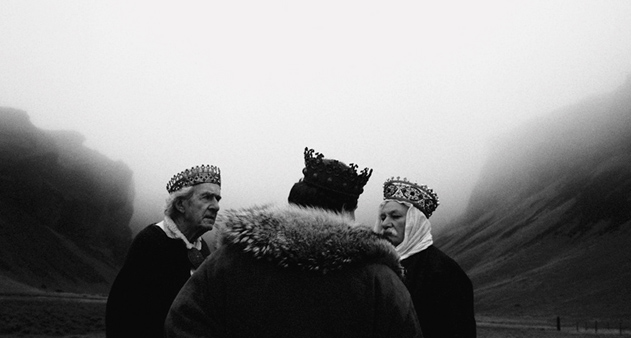
The limits of plot are less a concern than the grace of an event’s miraculous and personal unfolding for an individual. While the film conveys the infamous birth of a religious figure in a manner that is rooted in secular mortality, the film focuses on the personal contemplation and expressionistic moments inspired by the meaning of the event rather than expository dialog about religious convictions. Amazingly brave in its contemplative execution, Serra continues to allude to things beyond the nature of cinema’s plastics and today’s climate of physicality, technology and the literal.
Fearne and…Peaches Geldof (Iain Thompson)

The exuberant and excessive brit-pop culture anthropologist Fearne Cotton interviews the walking symbol of pseudo-modernist globalization: Peaches Geldof. While dismissed as another tabloid celebrity, Peaches is fascinating for the very fact that she is the end result of an over-saturated culture of mediated capitalism, and this “investigative” documentary defines a strange paradox behind the vapid meaning of today’s pop-psych justified Global- capitalist-culture. Like it, or hate it, this is the fascinating actualization of Godard’s chapter entitled “Dialogue with a Consumer Product” in Masculine Feminine.
The Girlfriend Experience (Steven Soderbergh)
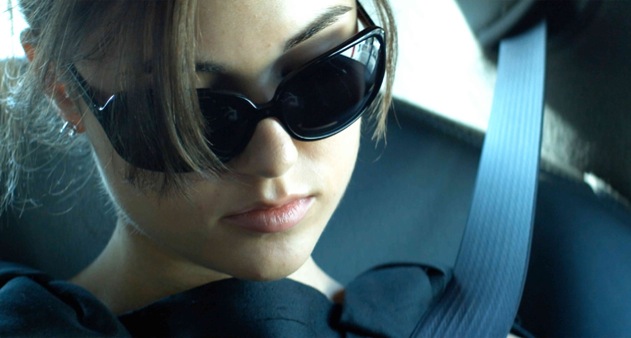
Speaking of Godard, Soderbergh perfects the mediated analogy of prostitution in the modern commodification of women through his study of Sasha Grey. While the film situates this classic genre within the American bail-out crisis and, as such, does adhere to a cold execution of facts, Soderbergh does not derail enough to miss the true emotional pain in the mediation and sale of women. Though his choices may appear simple, they are bold, and his genius comes through in his ability to convey an articulate analysis immediately!
Julia (Erick Zonca)
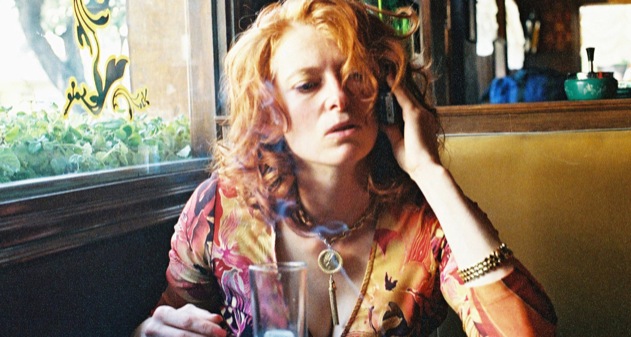
Zonca’s very quiet and confident character study of an American woman on the verge of drug-craved financial crisis overcomes the somewhat conventional narrative approach. The strengths of this film is in Zonca’s ability to draft a such a strong and weighty character through Tilda Swinton in a time when character goes overlooked in the seemingly popular didactic plot-driven approach of contemporary political cinema.
_Martyrs _(Pascal Laugier)
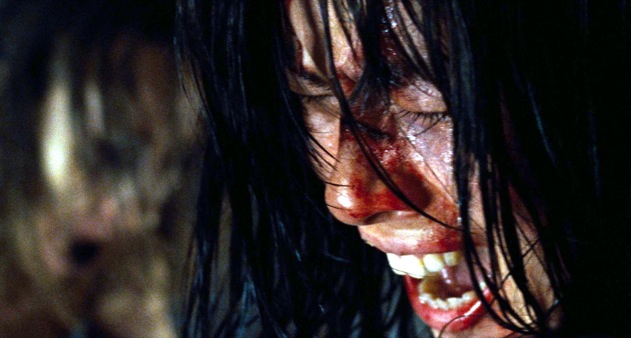
While Laugier’s film appropriates horror conventions in a tale of secret sadistic torture, it does so to provide for a strong critique of voyeurism in the vein of Haneke’s Funny Games. Laugier’s film depicts a complicated emotional analysis of the victimization in torture for exploratory and vicarious spectatorship that implicitly deconstructs the decade’s cinematic obsession with flesh-horrors such as Roth’s Hostel or Wan’s Saw series. In the end, Laguier’s point verges on satiric ambiguity as the responsibility of viewership results in appropriate self-disgust that should follow this trend.
nbc.com/yoteach / Funny People (Judd Apatow)
While not necessarily a film, the NBC website gave room for the Funny People viral campaign that rose above simple advertising. A fascinating and illuminating commentary about television’s mediation and appropriations of cultural stereotypes, the YoTeach site holds clips from a fictitious NBC show that address issues such as teen pregnancy and internet stalkers. The strength of the commentary resides in a biting satire that questions television’s oversimplification and commodification of real American issues. The false solutions found in the false sitcom clips address the limits of the media’s antiquated means of conversation.
_Pontypool _(Bruce McDonald)
[](http://www.poritsky.com/thecandlerblog/wp- content/uploads/2009/12/Pontypool1.jpg)
Always the popular genre, the zombie film is used as a means of understanding the elusive horrors of today’s loss of meaning in the use of English language. The confusing concept is amazingly handled by McDonald’s ability to navigate through abstract concepts in the appropriate and accessible moment-to-moment zombie trap. The strength of the film lies in the imperceptible way terror hints its way into our lives before we know with what we are dealing –the real scare effect that recalls the initial moment of cinematic zombies, before they loss their scare-factor.
Sauna (Antti-Jussi Annila)
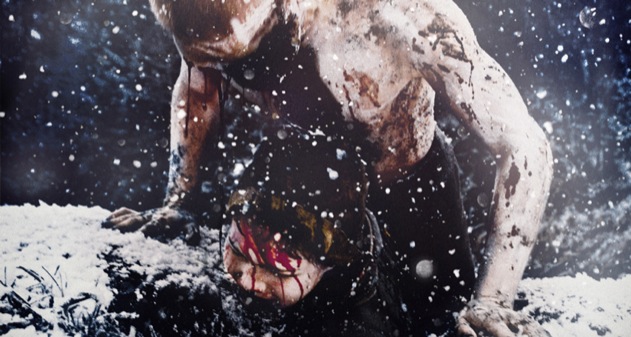
Annila’s film depicts the imperceptible horrors associated with intangible powers behind religious convictions. While the film’s depiction of 16th Century Occidental landscape can be distancing, Annila’s able to amazingly manifest the horrors behind the question of another’s belief system overcoming your own facilities and rationale behind your own convictions. In what feels like an Ingmar Bergman horror, Sauna hauntingly reverberates the horrifying questions of a higher intelligence’s wrath through something as simple as an accidental murder in a border-town.
Two Legged Horse (Samira Mahkmalbaf)

The daughter of Iranian cinema master Mohsen Mahkmalbaf, Samira takes her place as his successor with this complex portrait of victimization. A young man plays “horse” to a boy whom is unable to use his legs, and becomes a poetic metaphor for mistreatment by those whom take advantage of their positions of power. The disabled young boy mistreats his “horse” and enacts some of the most disturbing abuses committed to film this year. Strongly calling for real-life action beyond the confines of this sensitive, yet intensely scarring film, Samira has places herself among the most important political filmmakers working today.
Whatever Works (Woody Allen)
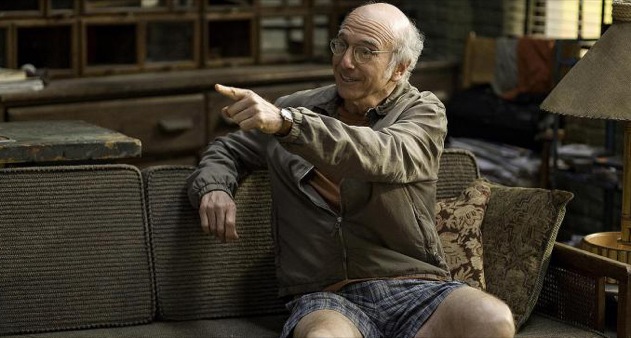
The grand comedic artist returns to American to provide a simple update of the neurosis of contemporary Americana. While Larry David is prominent, he is merely the vehicle through which Allen is able to deconstruct the apprehension Americans have about finding comfort in the overcomplication of sex roles. The real resolve is in trusting happiness can exist without hope, and that love’s overly complicated depiction is simply to validate itself when the humanity remains within its clichés.
Review: Nine
Fetishism is the first word that comes to mind when considering Rob Marshall’s newest musical film, Nine. Take your pick of which element is fetishized: Europe, the 1960s, cinema, Penélope Cruz, etc. This isn’t necessarily a bad thing. It’s actually quite an accurate read of how we now view the work of Federico Fellini and his peers. The filmmaker, on whose 8 ½ the 1982 musical, and by proxy this film, is based is known not only for his mastery of film language but for his keen eye for style. Of course, Fellini’s film was not a musical, but a backstage circus in the life of a woebegone director. Converting it to a stage musical must have been daunting enough, but bringing it back to the screen is something of a chore.
Daniel Day-Lewis is Guido Contini, the Italian director whose next film is sold as being his return to his glory days. The problem is that he hasn’t written it yet, and from the outset we learn he begins shooting in ten days. He is also a womanizer, haunted by the dream versions of the real women in his life. Though he is surrounded by men, it is the women who serves as his muses, for better or worse. Day-Lewis brings not only his uncanny abilities of vocal interpretation but also an incredible physicality to the Italian auteur. Gliding across the screen, he feels ten feet tall atop legs made of feathers. Sure, he’s no Fred Astaire, but if someone asked him to he could probably pull that off too.
Just as Fellini’s 8 ½ was a backstage film, this is a backstage musical. Nearly all of the numbers, in at least some capacity, take place on a soundstage that exists in the main character’s mind. Well, it’s also the set of his upcoming film, but really it’s just in his mind. The trouble is that this gimmick falls flat for a few reasons. First off, the musical numbers do little to move the story forward, even emotionally. Almost every single song deals with how much of a failure Guido has become later in life. If you had to take a shot every time the name Guido was uttered in a song, you’d be dead by the third reel. These indulgences would be fine if we actually learned anything useful about the character, but we know just about everything up front.
On top of that, some of the songs are just complete failures, such as Kate Hudson’s “Cinema Italiano”. This number, a hippy dippy boogaloo of sorts, is so boring musically, so conceptually flawed and so out of place in this film, the only consolation the viewer has is that it was written exclusively for the film. Meaning theatergoers were spared this insanity. On the other had, the showstopper of the bunch, Fergie’s “Be Italian”, is catchy enough to get stuck in your head and choreographed quite nicely for the stage, but fails to wow on screen. If I were watching the sandy tambourining live, I’d be enthralled, but it just doesn’t translate to cinema.
The only number that stands out is “I Can’t Make this Movie”, which features Day-Lewis singing in front of a film screen playing dailies from the film within a film. He feels hauntingly close to the audience in this instance, as if he is in the room sharing a moment with us. No doubt this will translate nicely to Americans’ new HDTVs when this hits Blu Ray. Ironically Also of note is Marion Cotillard’s “Take it All”, the only song that feels emotionally motivated in the whole piece.
Rob Marshall certainly lead the movement towards musical cinema early in the 2000s with Chicago, a film whose success launched a number of Broadway adaptations. I would have loved to have seen this show on Broadway under Mr. Marshall’s tutelage, but alas we have the film instead. It’s neither a very good musical nor a very good movie, but I believe audiences are still yearning for the return to musical cinema, so they will welcome this addition of something different.
Bests of the Decade Candlercast Part IV: Directors
 And
finally, the moment you’ve all been waiting for: the best directors of the
decade according to the candler blog. I’m going to do this a little
differently than our first installments on [Notable
Events](http://www.candlerblog.com/2009/12/17/bests-of-the-decade-candlercast-
part-i-notable-events/), [Writers](http://www.candlerblog.com/2009/12/18
/bests-of-the-decade-candlercast-part-ii-writers/) and
[Actors](http://www.candlerblog.com/2009/12/22/bests-of-the-decade-
candlercast-part-iii-actors/). When Sunrise Tippeconnie and I recorded this
podcast, we tried to sum up the entire decade in 90 minutes. We found it
completely impossible. In fact, the time we spent on directors alone was about
that much. The discussion was good enough that I thought we should share it
here. Instead of telling you who we pick as filmmaker of the decade, we
thought you should listen in and hear for yourself. Okay, maybe we’ll tell you
soon so keep your eyes peeled for a post about our favorite filmmaker of the
decade. In the meantime, sit back, relax and listen in on the musings of a few
cinephiles.
And
finally, the moment you’ve all been waiting for: the best directors of the
decade according to the candler blog. I’m going to do this a little
differently than our first installments on [Notable
Events](http://www.candlerblog.com/2009/12/17/bests-of-the-decade-candlercast-
part-i-notable-events/), [Writers](http://www.candlerblog.com/2009/12/18
/bests-of-the-decade-candlercast-part-ii-writers/) and
[Actors](http://www.candlerblog.com/2009/12/22/bests-of-the-decade-
candlercast-part-iii-actors/). When Sunrise Tippeconnie and I recorded this
podcast, we tried to sum up the entire decade in 90 minutes. We found it
completely impossible. In fact, the time we spent on directors alone was about
that much. The discussion was good enough that I thought we should share it
here. Instead of telling you who we pick as filmmaker of the decade, we
thought you should listen in and hear for yourself. Okay, maybe we’ll tell you
soon so keep your eyes peeled for a post about our favorite filmmaker of the
decade. In the meantime, sit back, relax and listen in on the musings of a few
cinephiles.
[podcast]http://www.candlerblog.com/wp-content/uploads/2009/12/bests-of-the- decade-part-iv-directors.mp3[/podcast] [Right-Click to Download](http://www.candlerblog.com/wp-content/uploads/2009/12/bests-of-the- decade-part-iv-directors.mp3) • [Subscribe in iTunes](http://itunes.apple.com/ WebObjects/MZStore.woa/wa/viewPodcast?id=334875368)
Review: Sherlock Holmes
In case your great aunt’s fruitcake wasn’t stale enough this holiday season (as stale as fruitcake jokes, perhaps?), head to the theater where you can get an eyeful of the same-old-same-old in Guy Ritchie’s unbearably boring Sherlock Holmes. The title character, a literary invention of Sir Arthur Conan Doyle, is one of the few who is yet to find a modern home on the silver screen as the decade of franchises comes to a close. Having seen Superman, Spiderman, James Bond and the Star Trek crew get a bigscreen reboot in the aughts, the next ten years will be dominated by bottom of the barrel heroes who have had a cultural (read: box office) impact in other generations. So before you line up in 2010 for Clash of the Titans, enter the good inspector Holmes and his devoted sidekick, Dr. Watson.
Though most fans will agree that the cadaverous Basil Rathbone’s portrayal of the master sleuth is the truest, it is difficult to deny that Robert Downey Jr. is more than adequately equipped to carry the torch. He certainly throws the kitchen sink at the role, though there isn’t much for the gifted thesp to work with. Penned by Michael Robert Johnson, Anthony Peckham and Simon Kinberg, this iteration of the Londoner gumshoe has little more than pecks to hang his hat on. Trained with the precision of a Kung Fu master, Holmes' newfound brutish strenghth may be the result of deductive reasoning, but he is a brute nonetheless. Planting blows where words fail him, this Holmes is more a man of action than any that came before him, which wouldn’t be such a bad thing if his intellect didn’t feel like such an afterthought.
Then there is Mr. Holmes’ devoted sidekick, Dr. Watson, here portrayed by Jude Law. The once sodden right arm of our hero has now come into his own, matching his partner wit for wit, blow for blow. Personally I’m glad to see Watson being used as more than a crumbcake sounding board, but the trouble is that he is too close to Holmes in every way. The skepticism and protestations are still there, but only glancingly. This Watson could go into private practice and he wouldn’t be missing much.
Instead of calling into question the culture of homophobia that pervades action cinema (a la Casino Royale), Mr. Ritchie takes the opposite route and just makes fun of the co-dependent crime solvers. Sure, each has a skirt to chase after in the film, but when push comes to shove they always choose each other. I can almost hear the director nudging the ribs of adolescent boys ages 15-55, whispering, “Aren’t they so gay for each other? It’s okay to laugh.” What’s all the more annoying in all of this is that Holmes’ sexuality, gay straight or otherwise, is a completely missed opportunity here. Downey is Downey so he exudes a raw sensuality, but I would have preferred him to smolder. We are instead slogged through these goofy fits of wink-wink-nudge- nudge as he chases after an out-of place Rachel McAdams for no reason.
Plot? Psht, don’t worry about plot here. Some jerk is trying to take over England or the world or something. Had the studio come to me in advance I could have advised they keep the nefariousness to a minimum and build character. Perhaps a serial killer would have been nice, but instead we have a fabulous magician (Mark Strong) leading a pack of fabulous Britons to some kind of fabulous display of, uh, manhood?
Finally, the visuals. The film is nothing if not stylized. Fashioned after a newspaper of the day, the colors are awash and some kind of muck sits between us and the film onscreen. It’s something between _Harry Potter _and 300. In an effort to bring us back to merry old London, Mr. Ritchie and cinematographer Phillippe Rousselot have filled the screen with digitally enhanced everything, which is certainly one way to go, though not one I enjoy sitting through. Sometimes it works, sometimes not so much.
Any time a character is brought to a new generation, there are undoubtedly changes that will appease new audiences and frustrate traditionalists. That Sherlock Holmes is now in his second century of pop relevance is no small feat, and the truth is that this film has sealed the interest of the next generation of filmgoers and readers. There is no doubt that we will see more of these films in years to come. One can only hope that whoever makes the next films will bring the character out of the slump this film represents; there isn’t anywhere to go but up.
Happy Holidays from the candler blog

It has been an exciting year of candling and we just wanted to wish you and yours a happy holidays. the candler blog started in March of 2009 and it has grown exponentially in the ensuing months. We couldn’t be happier with our readership’s commitment and we look forward to providing you with insight in 2010. Now enough withthe ushy gushy, let’s get back to candling.
Bests of the Decade Candlercast Part III: Actors
Moving forward with our epic podcast of the Bests of the Decade, Sunrise Tippeconnie and myself attempt to tackle the category of actors. It’s the twenty-first century, we’ve decided to do away with the term actress and bring men an women under one big comfy “actor” blanket. Still, we’re not so progressive that we don’t look on the achievements of men and women separately. Listen in as we discuss some of the best performances of the last ten years. From relative unknowns at the outset of the aughts, like Philip Seymour Hoffman, coming into their own, to aging actors finding new footing in their golden years, like Dustin Hoffman, it truly has been an exciting decade for cinema acting. We go through a lot of the top roles, but of course we miss a few. Check it out for our full thoughts, and click through to see the bests as picked by your very own candler blog.
[podcast]http://www.candlerblog.com/wp-content/uploads/2009/12/bests-of-the- decade-part-iii-actors.mp3[/podcast] [Right-Click to Download](http://www.candlerblog.com/wp-content/uploads/2009/12/bests-of-the- decade-part-iii-actors.mp3) • [Subscribe in iTunes](http://itunes.apple.com/We bObjects/MZStore.woa/wa/viewPodcast?id=334875368)
[](http://www.candlerblog.com/wp- content/uploads/2009/12/burnpic6.jpg)In 1999, it would have been safe to say that ER’s George Clooney would never find a way to make the jump from television star to movie star. After all, he was part of Batman’s ruination. However, looking back on the last ten years, it’s hard to imagine a Hollywood without him. By a long-shot, the 2000s have been dominated and defined by nearly every move the Cloon has made.
After deftly proving his comedic abilities in 2000’s O Brother, Where Art Thou?, he redefined the homage role as Danny Ocean (once Sinatra’s shoes) in Ocean’s Eleven and the subsequent sequels. This is probably the role he will be remembered for: a tough and tested smart aleck whose suit is as sharp as his wit. The comparisons to Cary Grant are becoming clearer on every outing, but make no mistake, Mr. Clooney is the embodiment of the modern male. The more flawed the role, the more he shines. Just look at his recent work as the title role in Michael Clayton, or as the zany filanderer Harry Pfarrer in the Coen Brothers’ Burn After Reading. These are roles that are very specific to masculinity in the aughts, and yet they are somehow timeless. No other actor has been able to excel at expounding on our moment so consistently.
And this doesn’t even take into account his offscreen endeavors. It should be noted that he is growing into one of Hollywood’s most prolific producers, taking chances on films where others shy away. He makes very smart decisions, knowing when to throw his celebrity behind a project without looking like an Oscar chaser, which he already has anyway. Plus, he has found a nice balance with the media between his philanthropic work and very private personal life. His colleagues get snapped and lampooned as he slinks on past. However, it is George Clooney’s phenomenal work this decade that makes him an obvious choice for Best Actor of the Decade.
[](http://www.candlerblog.com/wp- content/uploads/2009/12/3352a40b5ed51366148b091e99c3b047bobby.jpg)Cate Blanchett has pulled off the impossible this decade. She has made herself into a leading lady while consistently fulfilling the role of character actor. Almost chameleonlike from film to film, she keeps coming back to surprise us on nearly every outing. Her most memorable role this decade was as Katherine Hepburn in Martin Scorsese’s The Aviator, a role that is so simple to get wrong that many other actresses would never attempt it. What she brought to the film was both an awareness of our impressionistic expectations and an originality that built a woman even stronger than the Hepburn in our mind’s eye.
She also reprised her role as Queen Elizabeth in 2007’s Elizabeth: The Golden Age and played perhaps the most accurate incarnation of Bob Dylan in Todd Haynes’ I’m Not There. She was also quite amazingly evil in Indiana Jones and the Kingdom of the Crystal Skull. It really is her character work that she is measured by, but that’s not all she has done this decade. Her quirky deadpan was spot on in The Life Aquatic with Steve Zissou, and the emotional depth to her role in Babel is unmatched in an actress of her generation. Truly, imagining the 2000s without her is like imagining it without movies. We can only hope for great things in the decade to come.